Filter by
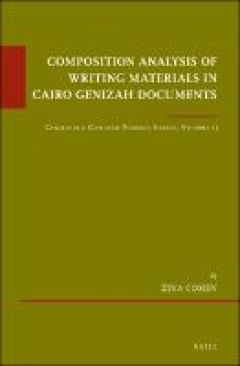
Composition Analysis of Writing Materials in Cairo Genizah Documents: Cambrid…
This work investigates the different writing materials in use in Egypt during the 11th century and the reason for their diversity.; Readership: Academics and specialists working in the Cairo Genizah and in writing material characterization.
- Edition
- Ed. 1
- ISBN/ISSN
- 9789004448872, 9789004469358
- Collation
- 228
- Series Title
- Études sur le judaïsme médiéval, 91
- Call Number
- 208 COH c
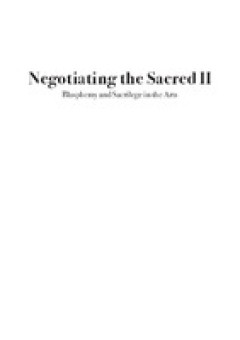
Negotiating the Sacred II: Blasphemy and Sacrilege in the Arts
Blasphemy and other forms of blatant disrespect to religious beliefs have the capacity to create significant civil and even international unrest. Consequently, the sacrosanctity of religious dogmas and beliefs, stringent laws of repression and codes of moral and ethical propriety have compelled artists to live and create with occupational hazards like uncertain audience response, self-censorshi…
- Edition
- Ed. 1
- ISBN/ISSN
- -
- Collation
- 210
- Series Title
- -
- Call Number
- 291.1 BUR n
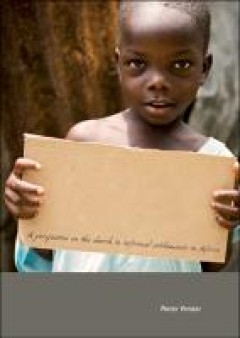
New hope for the poor: A perspective on the church in informal settlements in…
Empowering the poor remains an essential part of the Christian Gospel. The way in which the absolute poor in informal settlements in Africa can be empowered by the message of the Bible, needs to be researched. During research completed in informal settlements near Bloemfontein, Free State Province, South Africa, it has been established that the churches present in the situation are best equippe…
- Edition
- Ed. 1
- ISBN/ISSN
- -
- Collation
- 146
- Series Title
- -
- Call Number
- 208 VER n
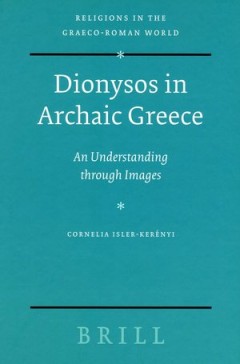
Dionysos in Archaic Greece : An Understanding Through Images
For the Greek, Dionysos was a very important god: for individuals as well as for the community as a whole. As there are only a few written sources dating from before the 5th Century BC the many images of Dionysos on Greek vases may well offer a genuine approach to the meaning given by the ancient viewer. This book explores the earliest images followed by those on small vases for private use, o…
- Edition
- -
- ISBN/ISSN
- 9789004144453
- Collation
- xx, 292 halaman
- Series Title
- -
- Call Number
- 200 ISL d

Confucianism, Buddhism, Daoism, Christianity and Chinese culture
This book collects the 25 most important articles written by Professor Tang since the 1980s, dealing extensively with issues of Confucianism, Buddhism, Daoism, Christianity and Chinese culture. In these articles, Professor Tang proves his value as a worthy successor to the Chinese philosophical tradition, while also open to the latest trends of thought both at home and abroad. ℗ℓ The late P…
- Edition
- -
- ISBN/ISSN
- 9783662455333
- Collation
- -
- Series Title
- -
- Call Number
- 299.512
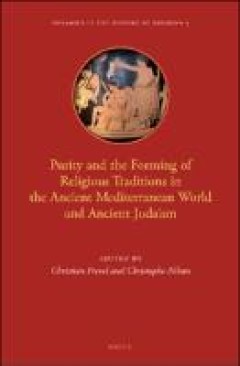
Purity and the Forming of Religious Traditions in the Ancient Mediterranean W…
Focusing on concepts, practices and images associated with purity in the ancient Mediterranean, this volume contributes new aspects to the current discussion about the forming of religious traditions, from a comparative perspective that acknowldges individual developments, mutual exchanges, as well as transcultural processes.; Readership: Scholars interested in the history of religions, religio…
- Edition
- -
- ISBN/ISSN
- 9789004232105
- Collation
- -
- Series Title
- -
- Call Number
- 220

The Givenness of Desire: Human Subjectivity and the Natural Desire to See God
This book examines the human desire for God through the lens of Bernard Lonergan's 'concrete subjectivity.' With Lonergan as an integrating thread, the author engages a variety of thinkers, including Hans Urs von Balthazar, Jean-Luc Marion, Rene Girard, Lawrence Feingold, John Milbank, John Paul II, Benedict XVI, Pope France, among others. The Givenness of Desire investigates our paradoxical de…
- Edition
- -
- ISBN/ISSN
- 9781487500313
- Collation
- -
- Series Title
- -
- Call Number
- 210.1

The Science Communication Challenge: Truth and Disagreement in Democratic Kno…
The Science Communication Challenge explores and discusses the whys – as distinct from the hows – of science communication. Arguing that the dominant science communication paradigm is didactic, it makes the case for a political category of science communication, aimed at furthering discussions of science-related public affairs and making room for civilized and reasonable exchanges between d…
- Edition
- -
- ISBN/ISSN
- 9781783087532
- Collation
- -
- Series Title
- -
- Call Number
- 297.27
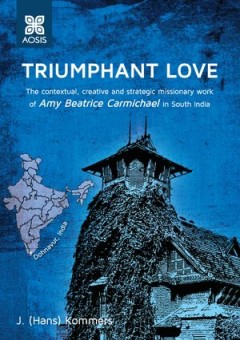
Triumphant Love : The contextual, creative and strategic missionary work of A…
The book is a treasure trove for scholars in the field of science of religion who focus on comparative religion, spirituality and the reception of Christianity in India and Ireland. The strength of the book is its comprehensive scope, critical and narratological methodology, and the depth of the data analysis. The exposition of the contextual, creative and strategic missionary work of Amy Beatr…
- Edition
- -
- ISBN/ISSN
- 9781928396215
- Collation
- -
- Series Title
- -
- Call Number
- 200 KOM t
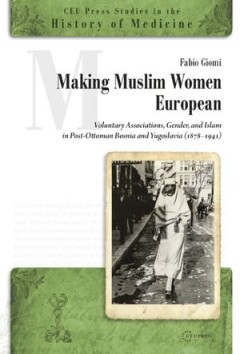
Making Muslim Women European: Voluntary Associations, Gender, and Islam in Po…
This social, cultural, and political history of Slavic Muslim women of the Yugoslav region in the first decades of the post-Ottoman era is the first to provide a comprehensive overview of the issues confronting these women. It is based on a study of voluntary associations (philanthropic, cultural, Islamic-traditionalist, and feminist) of the period. It is broadly held that Muslim women were sil…
- Edition
- -
- ISBN/ISSN
- 9789633863695
- Collation
- -
- Series Title
- -
- Call Number
- 297.092 GIO m
 Computer Science, Information & General Works
Computer Science, Information & General Works  Philosophy & Psychology
Philosophy & Psychology  Religion
Religion  Social Sciences
Social Sciences  Language
Language  Pure Science
Pure Science  Applied Sciences
Applied Sciences  Art & Recreation
Art & Recreation  Literature
Literature  History & Geography
History & Geography